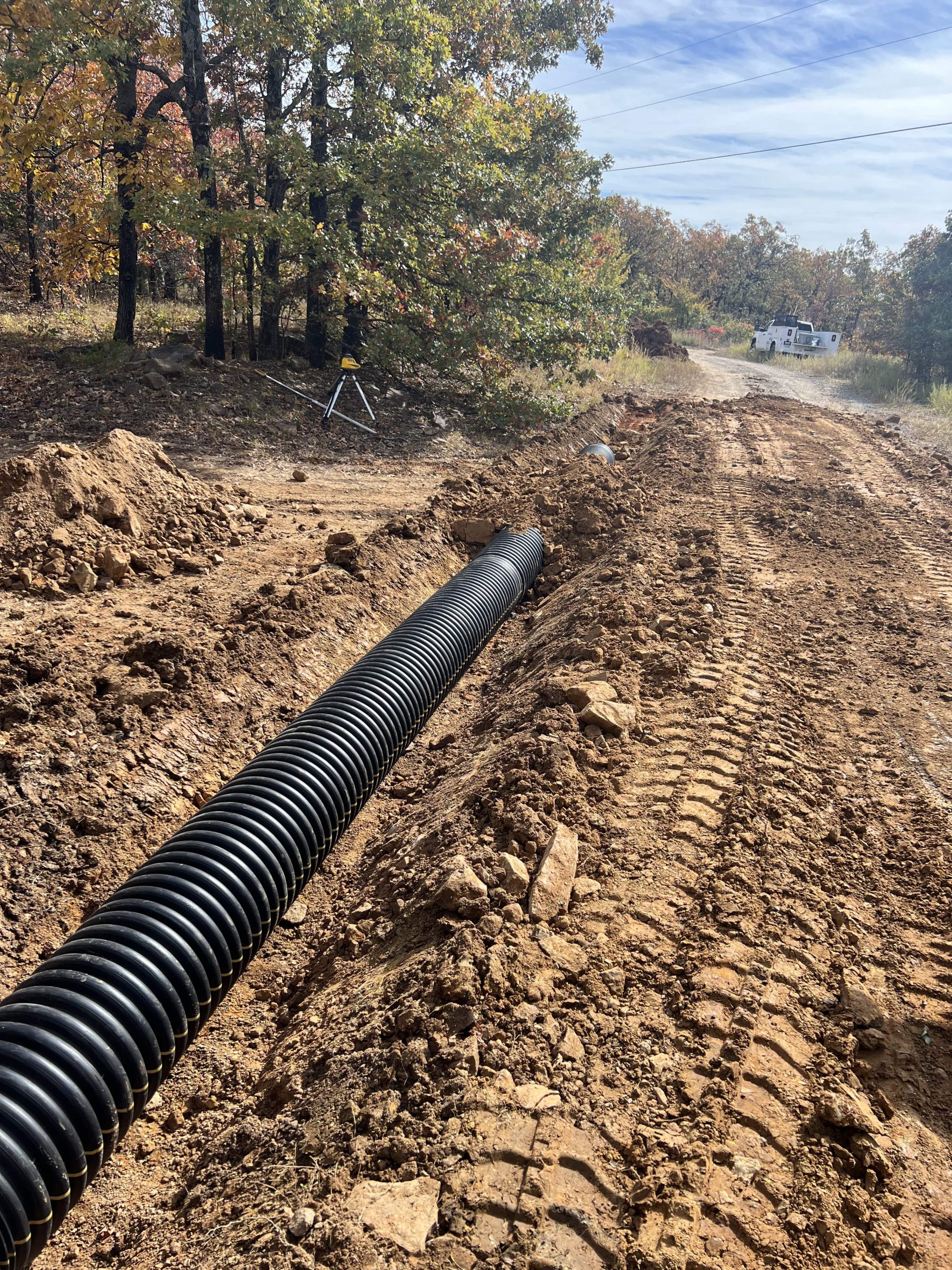Culvert Installment Made Easy: Step-by-Step Guide for Success
From choosing the ideal culvert size to integrating proper drainage measures, each step in the installment procedure plays a critical duty in the capability and longevity of the culvert system. Keep tuned to discover the necessary steps and considerations that can make culvert installation a seamless and successful endeavor.
Picking the Right Culvert Dimension
Selecting the ideal culvert dimension is important for guaranteeing efficient water circulation and structural integrity in culvert installment jobs - Pad Construction. The size of the culvert directly influences the circulation capacity of water via the framework. A culvert that is too little can lead to flooding and overflow, while one that is also big may cause reduced water rate, potentially creating sediment buildup and obstructions
To establish the ideal culvert size, variables such as the watershed area, height circulation rates, and hydraulic effectiveness need to be meticulously considered. Computations based upon these specifications aid in choosing a size that can appropriately deal with the predicted water volume while lessening the risk of blockages and structural failing.
It is vital to get in touch with engineering guidelines and standards to make sure that the chosen culvert size fulfills the job demands and neighborhood regulations (Pad Construction). By choosing the appropriate culvert size, project managers can maximize water circulation, protect against potential concerns, and improve the general performance and longevity of the culvert setup
Preparing the Setup Website
Reliable culvert installation demands thorough prep work of the installation site to guarantee ideal architectural assistance and functionality. Before commencing the setup procedure, it is essential to remove the site of any type of debris, greenery, or blockages that can impede the culvert's placement. Ensuring a level foundation is necessary for the correct placement and security of the culvert. This may include rating the website to develop a smooth, also surface that can sufficiently support the weight of the culvert and any kind of awaited tons. Furthermore, correct compaction of the dirt beneath the culvert is needed to protect against resolving or moving in time.
Moreover, it is necessary to think about variables such as soil make-up, groundwater levels, and environmental effects when preparing the installment website. Performing a comprehensive site evaluation can aid identify any prospective obstacles or dangers that may impact the culvert's efficiency. By putting in the time to prepare the setup site properly, you can assist ensure an effective culvert installment that fulfills architectural demands and makes sure lasting functionality.
Putting the Culvert Correctly

The quality at which the culvert is placed is important for maintaining a correct incline for water flow. A gradual slope assists avoid pooling and promotes efficient drain. Furthermore, the culvert must be oriented properly to make certain that the inlet and outlet remain in the proper areas. This orientation is important for the culvert to work successfully in handling water flow.
Backfilling and Compacting the Dirt
Correct backfilling and compaction of the soil around the culvert is vital to make sure stability and prevent possible problems in the future. When the culvert is correctly positioned, the following important step is to backfill the location around it with appropriate material. The backfill product must be devoid of rocks, debris, and raw material to stay clear of damages to the culvert. It is recommended to use granular material such as sand or crushed rock for backfilling, as it offers excellent drain and compaction properties.
After positioning the backfill material, it is essential to compact it in layers of consistent density. Utilizing a compactor or a mechanical meddle, portable the soil delicately to avoid damaging the culvert. Compaction aids in decreasing the possibilities of settlement and makes certain uniform over at this website support around the culvert. It is essential to compact the soil uniformly on all sides of the culvert to preserve its architectural integrity.
Appropriate backfilling and compaction not just give stability to the culvert yet likewise assist in preventing soil erosion and preserving the durability of the culvert system.
Guaranteeing Proper Drainage Integration
Integrating efficient drain options plays a vital role in the general performance and durability of culvert setups. Appropriate drain assimilation is crucial for taking care of water circulation, protecting against disintegration, and ensuring the architectural integrity of the culvert system. To attain this, it is crucial to create a thorough drain plan that takes into consideration elements such as the volume of water expected, the topography of the location, and the sort of soil present.

Additionally, incorporating functions like disintegration control actions, such as riprap or plant life, can better enhance the effectiveness of the drain system. By very carefully intending and implementing these drainage remedies, culvert setups can operate successfully and withstand the test of time.
Conclusion
Finally, proper culvert setup is important for preserving effective drain systems. By choosing the best read what he said culvert size, preparing the installation website, placing the culvert appropriately, backfilling and condensing the dirt, and guaranteeing proper water drainage integration, success can be accomplished. Complying with these actions will assist make certain the durability and effectiveness of the culvert, inevitably adding to the overall success of the drainage system.